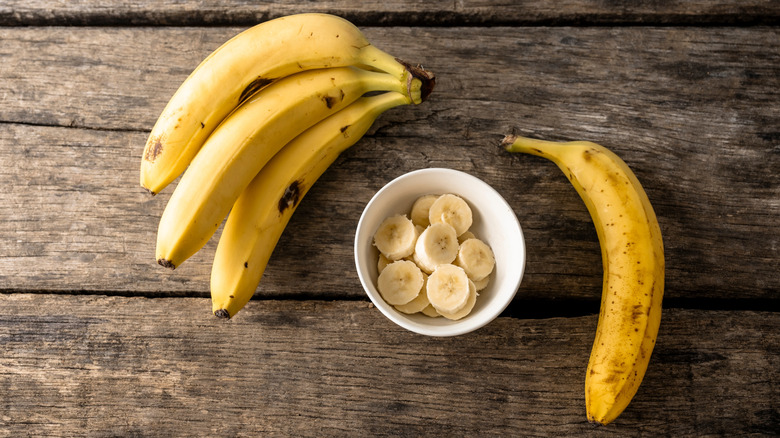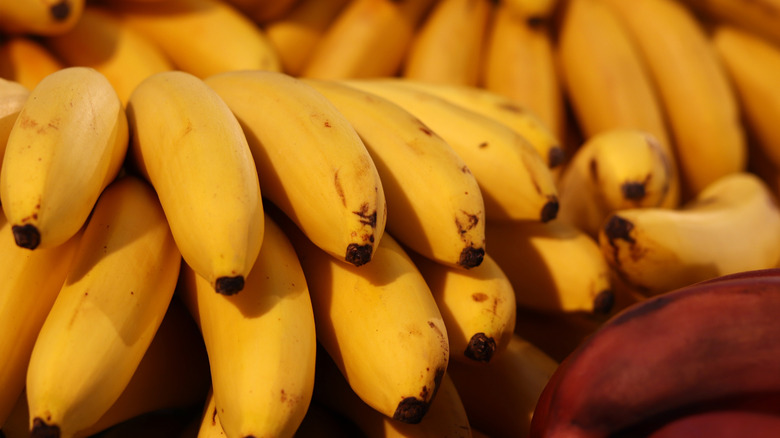What Color Should Your Bananas Be For The Most Nutritious Bite?
Bananas are a sweet, soft, and often divisive health food. They can be used in smoothies, added as a topping for breakfasts, or eaten on their own for a quick energy-boosting bite. One of the mistakes that people make with bananas is not selecting ones that give them the nutritional value they want. However, it can be hard to know which ones are best. Luckily, the color of the peel can tell you a lot about the vitamins and minerals contained inside. So, what color banana is the most nutritionally rich? The answer is a resounding ... it depends.
The fact of the matter is that bananas go through a lot of changes as they ripen, and so does their sugar and nutritional content. Green bananas, especially fully unripe ones, are very rich in dietary fiber and low in sugar. Their dietary fiber promotes gut health through prebiotic nutrients, making them really good for you, especially if you need a low-sugar option. Browned bananas are high in sugar, which makes them great for baking and the easiest to digest. However, they have less nutritional content in general, even if they do boast incredibly high antioxidant content. An often-seen-as-perfect yellow banana is a good medium between the two, with decent fiber, antioxidant, and catechin levels.
So, each color has its benefits and drawbacks when selecting a decent bunch at the store. Which one gives you the most nutrition just depends on what vitamins or minerals you personally are seeking. Every banana has high amounts of potassium and vitamin C, so whatever color you select, you're sure to get something nutrient-rich.
Select the right banana for your needs
To determine which banana is the best option for you, consider your own health and what you want to get when peeling this natural snack. For people who are diabetic and want a boost of fiber and vitamins, green bananas have lower sugar while still offering plenty of resistant starch. Keep in mind that green bananas can be hard to digest, and they don't taste as sugary. If you're seeking antioxidants and catechin, mashing up a brown-freckled banana and freezing it into ice cream might offer you a sweet and healthy dessert. Just know that you'll be giving up a lot of fiber. If you want vitamins and minerals without high sugars, but still want a somewhat sweet taste, look for all yellow bananas, potentially with a little green still on the stem. You might have to check carefully, as some bananas come with plastic wrapped around the stems.
The best possible banana is something that often feels mythical, and most people differ on what degree of ripeness is ideal. But no matter how you slice it, or them, bananas are a healthy snack option for adults and children alike. They offer potassium, iron, vitamin B6, vitamin C, copper, magnesium, manganese, and more. Their natural sugars can sweeten your cooking without needing additional syrups or processed sugar. Even those white strings on bananas, or pholem bundles, are safe and healthy to eat. So, while you can get extra nutrition from different colored bananas, you can probably just pick one with a texture and appearance you like without worrying you're missing out on any health benefits.

